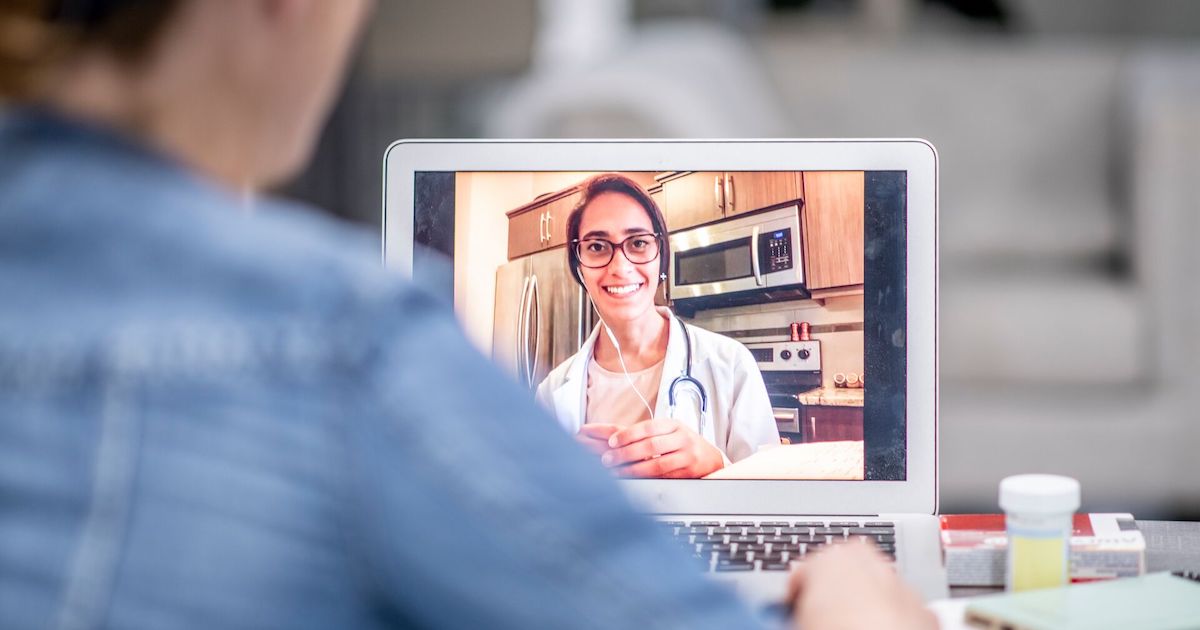Patient outcomes point to efficacy of telehealth and virtual care

According to a Kaiser Permanente study, the rise of telehealth during the COVID-19 pandemic and the resulting increase in telemedicine adoption are helping meet patient needs without major signs of safety issues.
WHY IT MATTERS
The study, published in the Annals of Internal Medicine, analyzed more than 1.5 million adult patients at Kaiser Permanente Northern California in 2021 and compared treatment and follow-up visits with primary care telemedicine (video and phone) and in-person office visits.
Of the 2,357,598 primary care visits analyzed, just over half (50.8%) used telemedicine, resulting in just under 20% consisting of video visits and 31.3% telephone visits.
The findings indicate that medication prescription rates for video and telephone visits were lower (38.4% and 34.6%, respectively), compared to in-person visits (46.8%). Additionally, follow-up appointments within seven days were less common for in-person visits (1.3%) compared to video (6.2%) and telephone (7.6%) visits.
Treatment outcomes include prescribing medications or antibiotics and ordering laboratory or imaging tests.
Follow-up visits were categorized as in-person primary care visits, emergency department visits, or hospital admissions within seven days.
The study adjusted outcomes for sociodemographic and clinical characteristics, both overall and stratified by clinical area.
Limitations of the study include the observational nature of the comparison, which lacks detailed symptom measurements, according to the report, and the focus on follow-up within a seven-day period.
The study concluded that post-pandemic telemedicine will likely remain a convenient primary care option for patients, especially those who face barriers to in-person visits.
THE BIG TREND
Telehealth, along with remote patient monitoring, could help address many key challenges in chronic care management at a time when rising healthcare costs and workforce shortages are straining the nation’s healthcare system.
Virtual care can help alleviate the mental health crisis in rural areas, while teleneurology improves access and care for veterans.
Telehealth has also proven successful in treating opioid use disorders: Virtual care provider Ophelia found that 56% of its OUD patients stayed in treatment for six months and 48% stayed for a year, with retention rates significantly higher than traditional in-person care.
In September, the American Telemedicine Association released an SDOH toolkit to scale telehealth delivery in the community.
The new measures, calculators and other tools will help communities address the economic burden of inaction on health disparities and improve health through greater access to virtual care.
Despite the promise of telemedicine, older Americans are face a number of barriers to adoptionincluding struggles with digital channels, access and ease of use.
ON THE RECORD
“As patients and healthcare systems have expanded the use of telemedicine to broader clinical use cases over the longer term, even after the initial pandemic of the COVID-19 pandemic, we have found that the continued use of telemedicine is quite effective in the form of limited visits to the return office, a low number of emergency visits and a low number of emergency visits. very low hospitalization rates compared to office visits,” explains Dr. Mary Reed, Research Scientist, Kaiser Permanente Northern California Division of Research.
She added that she believes this should be seen as evidence of telemedicine’s success in its broad clinical use cases in primary care.
“It’s also worth noting that the telemedicine environment we studied is an integrated system in which patients see their own providers via telemedicine, the same physicians they would see if they came to a clinic,” says Reed. “This consistency may be one reason why we did not see high follow-up rates in office or emergency department visits after virtual care.”
Nathan Eddy is a healthcare and technology freelancer based in Berlin.
Email the writer: nathaneddy@gmail.com
Twitter: @dropdeaded209
